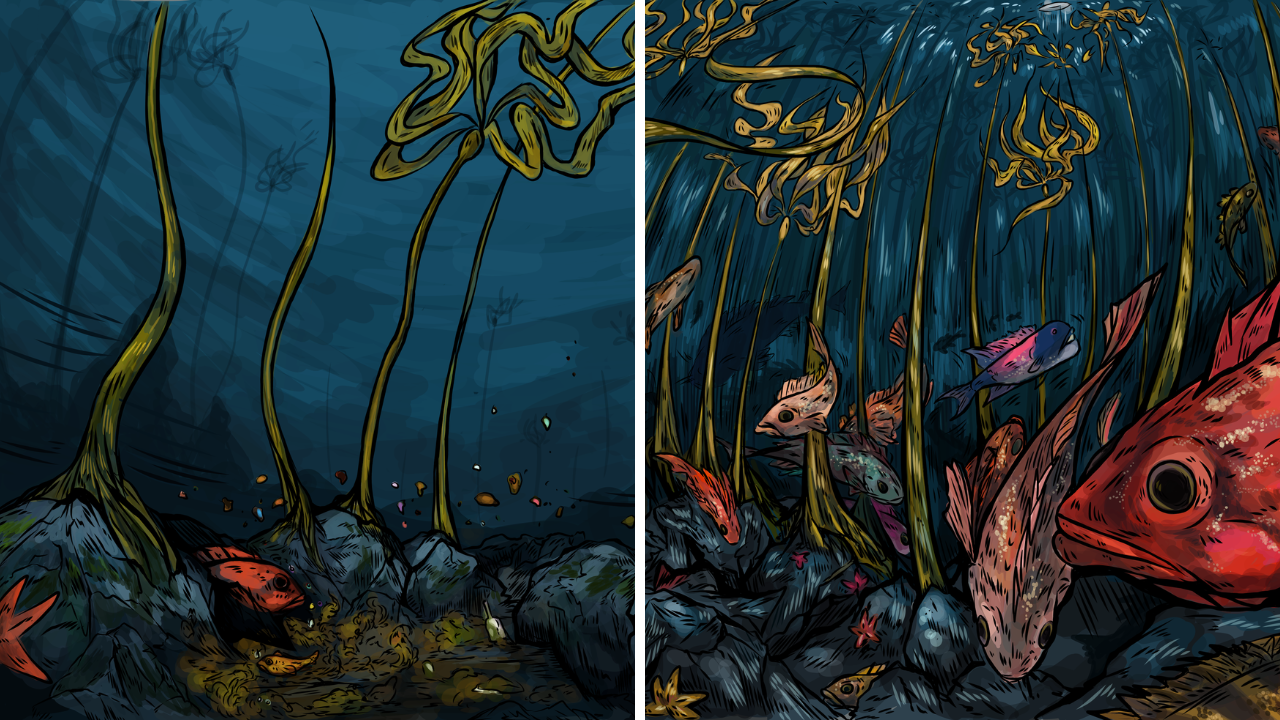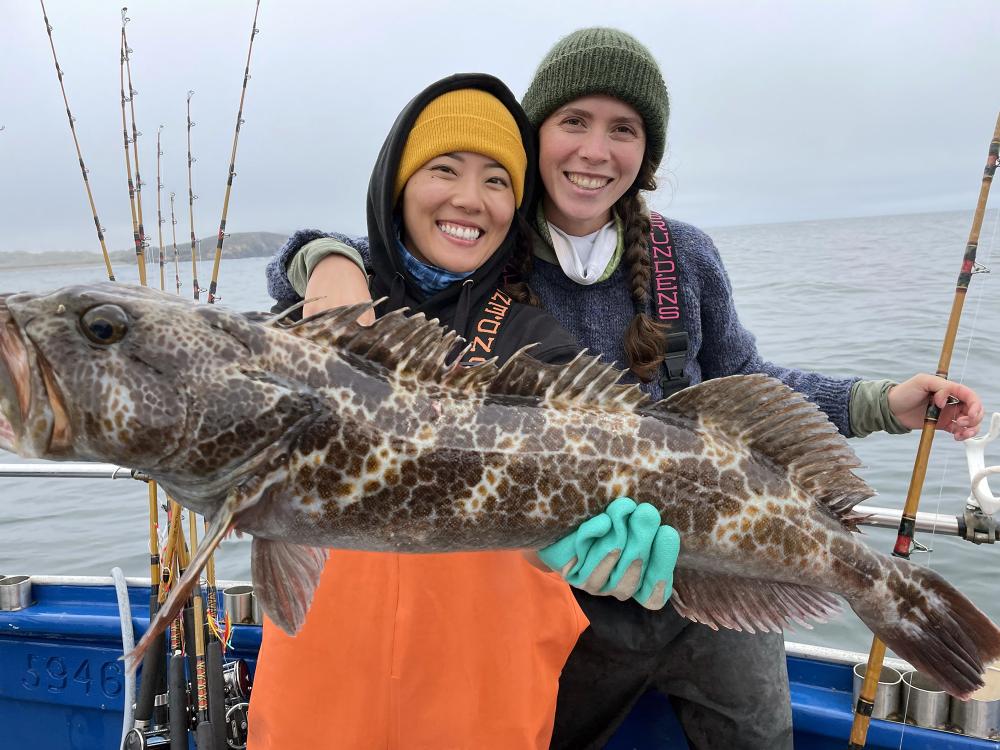
What Rockfish Can Tell Us About Pollution
Quick Summary
- Research done by the California Collaborative Fisheries Research Program (CCFRP) reveals that rockfish can help illustrate the importance of marine conservation across the California Coast.

The California Collaborative Fisheries Research Program (CCFRP) is a partnership that brings together marine researchers, management agencies, and local fishers. Together, the communities explore Marine Protected Areas (MPAs), which are sanctioned zones on the California coast with heavy anthropogenic restrictions to protect local marine life. By collaborating with local anglers to survey rockfish near these areas, scientists can further their research communication to advocate for improved fisheries management.
Christina Pasparakis, Assistant Professor in the Environmental Toxicology Department at the UC Davis Bodega Marine Laboratory (BML) and Principal Investigator of the Toxicology, Physiology, Ecology and Conservation (ToPEC) Lab, oversees the research out of BML. Pasparakis explains that “running these trips requires significant effort, so it's crucial to make the most of our time on the water by incorporating additional research. Rockfish, which we already catch during these trips, are also an ideal species for studying microplastics.”
Rockfish behavior and microplastic abundance
Microplastics are worrisome when it comes to ocean pollution due to both their abundance and assortment in today’s marine environment.
Microplastics can clog the rockfish's digestive system because they can be mistaken for food. Additionally, Pasparakis states that “these particles can come into contact with their gills, interfering with their breathing process.”
Along with this danger, microplastics are hydrophobic and tend to absorb other organic pollutants in the ocean. Pasparakis clarifies, “A lot of these chemicals are [also] hydrophobic, so they absorb into plastics more readily than into water.” Therefore, when rockfish consume microplastics, “they also ingest these absorbed chemicals,” Pasparakis states.
At the same time, Pasparakis observes that rockfish are subject to microplastic biomagnification, being top predators in many marine food webs. “Plankton will be eaten by larval fish, which are eaten by small fish, and then those fish get eaten by larger fish like [rockfish].” Compared to other areas, such as terrestrial systems, aquatic food webs are generally more complex due to the dynamic flow of the ocean and the abundance of food sources, which contributes to the increase in links for direct microplastic spread. Pasparakis adds, “If there's more [food] links, there's more potential for biomagnification to occur,” as microplastics will have increased points of entry into predators.

Additionally, rockfish can live between 40 and 200 years old, making them subject to microplastic bioaccumulation. “Bioaccumulation will occur over time within an organism. Long-lived rockfish have a long time to bioaccumulate toxins,” says Pasparakis. Francine De Castro, a Master’s student in the ToPEC Lab, adds, “Some of these fish have been around to see the invention of microplastics, which is cool but also frightening.”
Moreover, De Castro clarifies that some rockfish have high site fidelity, in that they stay put. She motions to the size of her five-by-five meter office to explain: “They find an area of rock that they like, and then they just hang out there. It can be a good metric for observing a specific environment.”
Rockfish also live in the benthic zone, thriving near the ocean floor, which can help inform pollution at this level. “Some ‘missing microplastics’ are likely ending up in the benthos,” says Pasparakis. She explains that microplastics are subject to biofouling, where “accumulation of microorganisms causes[microplastics] to become heavier and sink down.”
Pasparakis observes, “These predatory fish, with their small home range living for long periods, could function as indicators for the state of marine pollution in specific locations.”
What can this lead to?
Stemming from the CCFRP partnership, microplastics research has become the focus of the thesis for ToPEC Master’s student Jordan Colby.
Once the researchers catch the fish, Colby explains that “we assess signs of predation and trauma.” In reference sites outside of the MPAs, only about 190 out of the crew's 8,000 fish haul have been sacrificed for further examination. Colby highlights that to sacrifice a catch, the fish must meet certain criteria by showing signs of illness or visible damage to the body. If the fish is dissected, the researchers measure the otoliths, or the inner ear bones, to observe the age and maturity of each catch. Colby mentions that “we also look at the gastrointestinal tract to understand how those plastics move around the fish.”

To investigate microplastic accumulation in different tissues, the researchers place filets of rockfish into potassium hydroxide, which is a strong chemical that dissolves organic matter and leaves behind any inorganic pollutants. Then, using infrared spectrometry, the researchers can identify the particles and compare them to a database of other known chemicals. “It’s a matter of trend finding and linking together,” Colby simplifies.
Cumulatively, this data can distinguish between different types of pollutants, which can also help with “understanding the points of [microplastic] entry into aquatic systems,” Colby analyzes. He shares an example derived from observing an abundance of plastic fibers. “Synthetic T-shirts [can be] a major contributor to plastic pollution [because] clothes washing systems can wash fibers down the drain.”
Pasparakis adds, “Microplastics can also come from larger pieces of plastics that break down over time, or they can be manufactured at the microplastic size.” She cites some examples, including facial beads in cleaning products and certain sunscreens. More data enables a better understanding of both the risks linked to microplastic ingestion and the identification of sources contributing to this form of marine pollution.
Combined with the wide range of CCFRP partnerships along the California Coast, De Castro indicates that “you get an idea of the different types and concentrations of microplastics that may be sequestered in [rockfish].”
“It is exhausting, but it is fun,” Pasparakis shares, “partially because of the way everyone works together as a team for a shared goal.”
Those interested in this experience can find out more by signing up to be a volunteer with CCFRP.
About the Author:
Elijah Valerjev, UC Davis class of 2024, is a Molecular and Medical Microbiology major with an Education and Professional Writing double minor. Interested in science communication, he enjoys the storytelling aspect of science writing, and is especially interested in connecting research topics to societal issues. Elijah works as board editor for the Aggie Transcript Undergraduate Research Journal, in addition to his work for the CMSI. In his spare time, he can be found enjoying his hobbies which include boxing, fiction writing and watching movies.
About the Illustrator:
Keila Alejos began her undergraduate studies at UC Davis in 2023. She aspires to combine both her passion for art and narrative illustrations with the insight of science or historical eras. Motivated by the opportunities at UC Davis, she is determined to learn and grow as both a scientist and artist with CMSI. Aside from the work being done for CMSI she also enjoys drawing her own series and ideas. On her days off, She often enjoys playing her bass, reading comic books, or her personal favorite, listening to loud music.
